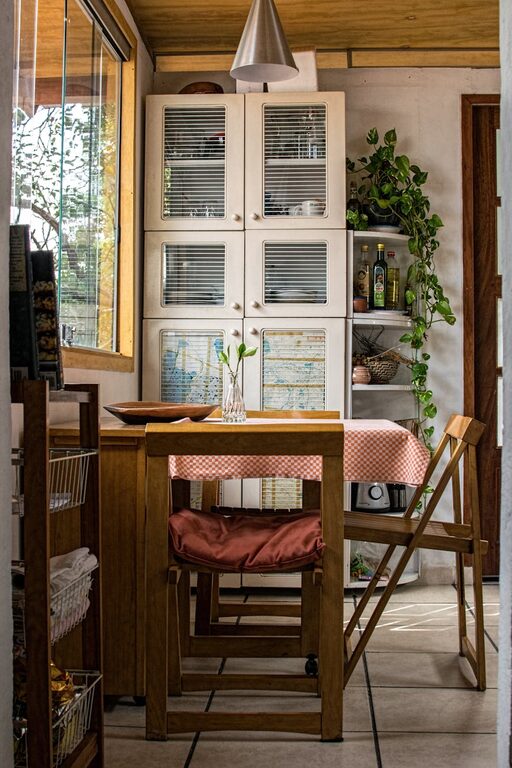A dark room can often feel cramped, dull, or uninviting. Whether your space lacks natural light, has small windows, or just feels gloomy, there are plenty of quick and easy solutions to brighten it up. You don’t need a full renovation or expensive equipment. With a few smart tweaks, you can turn a shadowy corner into a vibrant, cheerful environment. Here are some helpful ideas to brighten a dark room that anyone can try.
1. Maximize Natural Light
Natural light is the easiest way to illuminate a room, so start by optimizing it.
Clean Windows and Remove Obstacles
Dirty windows block sunlight. Regularly clean windows inside and out to let as much light in as possible. Also, avoid heavy drapes or furniture that may block window light. Consider sheer curtains or blinds that slide easily to keep the space open.
Use Mirrors to Reflect Light
Mirrors are great for bouncing natural light around the room. Place one or more mirrors opposite windows or near light sources to amplify brightness. Aim for large, framed mirrors or even a collage of smaller ones to add style and light.
2. Brighten Up Walls and Ceilings
The colors you choose for your walls dramatically affect how much light a room feels like it has.
Opt for Light Paint Colors
Light colors reflect more light. Whites, creams, pale blues, soft grays, and pastel shades help rooms feel more spacious and airy. Avoid dark or overly saturated hues that absorb light. If painting all walls feels like a big job, try a light accent wall or partial wall treatment.
Consider a Bright or Glossy Ceiling
White or light-colored ceilings increase reflected light from overhead lighting or windows. A semi-gloss or satin paint finish on the ceiling can reflect more light than flat paint, helping distribute brightness throughout the room.
3. Use Strategic Lighting
Good lighting is key when natural light is limited.
Layer Your Lighting
Instead of relying on one overhead fixture, use layers of lighting:
– Ambient lighting: A central ceiling light or wall-mounted fixtures to brighten the overall space.
– Task lighting: Desk lamps, reading lamps, or under-cabinet lights for focused needs.
– Accent lighting: String lights, LED strips, or small spotlights to highlight art or plants.
Choose Bulbs Wisely
Warm bulbs create coziness but can sometimes feel dim in dark rooms. Opt for daylight or cool white LED bulbs (around 4000K to 5000K) for a brighter, more natural look. Also, check the lumen output to ensure bulbs are sufficiently bright for your space.
4. Incorporate Reflective and Light Materials
The furniture and decor you select also affect light flow.
Select Light-Colored or Glossy Furniture
Furniture with light finishes like white, pale wood, or glass surfaces help brighten rooms by reflecting light. Avoid bulky dark pieces that absorb light and make spaces feel closed-in.
Use Metallic and Glass Accents
Metal fixtures, chrome, brass, or glass accessories can reflect light beautifully. Consider metal lamps, glass coffee tables, or mirrored trays to distribute brightness subtly.
Choose Light Fabrics
Pick upholstery, rugs, and curtains in light colors and airy fabrics. Linen, cotton, and sheer materials diffuse light well and add softness.
5. Add Greenery for Freshness
Plants don’t directly brighten a room but contribute to a fresh, lively atmosphere that can counteract darkness.
Place Plants Near Light Sources
Place plants by windows or near lamps so they thrive and add natural vibrancy. Smaller plants on shelves or hanging planters can also bring life without clutter.
Use Plants with Reflective Leaves
Certain plants like snake plants or rubber plants have glossy leaves that reflect light, adding to the bright effect.
6. Declutter and Organize
A cluttered room feels cramped and darker. Clearing and organizing your space opens up light paths.
Keep Surfaces Clear
Too many items on tables, shelves, or floors create shadows and block light flow. Store items neatly and regularly declutter.
Choose Open and Minimalist Storage
Open shelving and transparent storage can help avoid heaviness in a dark room. Avoid bulky opaque storage that can densify the space.
7. Utilize Creative Tricks
Sometimes, small creative tweaks can make a surprising difference.
Use Light-Colored Rugs
Area rugs in soft colors or patterns reflect light better than dark carpets and help brighten floor space.
Update Hardware and Switch Plates
Replacing old dark switches, doorknobs, and cabinet pulls with bright, shiny options can add subtle light-catching details.
Hang Artwork with Light Backgrounds
Choose art with white or bright mats and frames to contribute to the light feeling on your walls.
—
Final Thoughts
Brightening a dark room doesn’t have to be overwhelming or costly. By combining natural light enhancements, strategic lighting, light colors, reflective surfaces, and thoughtful decor choices, you can transform even the gloomiest space into a welcoming, luminous retreat. Start with a few changes and see how your room’s mood lifts immediately!
Feel free to experiment and find what works best for your unique space. Bright spaces invite happiness and productivity — so don’t wait to brighten up your room today!

